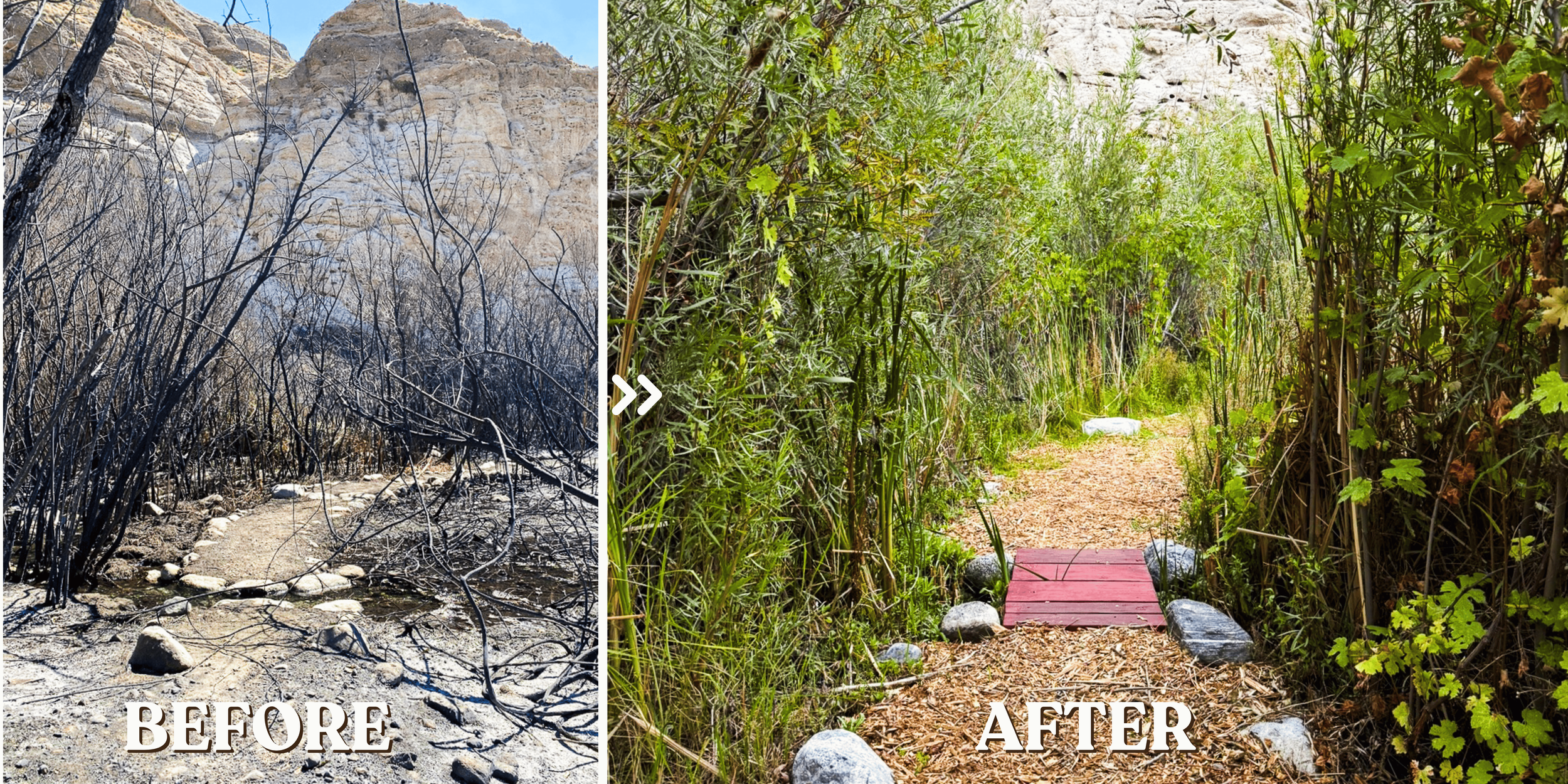Five Years After the Fire: Restoration and Renewal at Whitewater Preserve
Whitewater Preserves culvert crossing before and after restoration | Photo by Whitewater Staff
Five years ago, wildfire swept through Whitewater Preserve, leaving behind a charred landscape and uncertainty about what the future would hold. Standing in the aftermath, it was difficult to imagine life returning to the canyon’s quiet streams and shaded groves. Although an inquisitive eye may still spot blackened branches beneath the new growth of sugar bushes, mesquites, and catclaws, the land has largely been renewed.
The fire began at the edge of Whitewater’s magnificent cottonwood-willow riparian habitat — a rare and precious ecosystem along the Whitewater River, and increasingly uncommon throughout the West due to development and habitat loss. During the property’s transition from commercial hatchery to preserve, this wetland was lovingly restored through hundreds of hours of staff and volunteer work. In only a few short years, the largely barren commercial landscape became a verdant wonderland, echoing with the calls of threatened migratory birdsong, flowing water, and the laughter of children discovering nature for the first time.
Whitewater Preserves greenery and cliff faces before and after restoration | Photo by Whitewater Staff
For local schoolchildren participating in our Outdoor Discovery Program, Whitewater’s riparian areas are their first experience of a living, breathing river landscape. In so many of the surrounding urban communities, rivers and streams have largely been reduced to concrete flood channels. For those who poured their hearts into restoration and education, the fire felt like a tragic setback. Yet, as the years have passed, it is clear the fire also became a catalyst for unity and action.
Together, volunteers and staff planted new trees, made room for new growth, removed waves of invasive species, and rebuilt essential infrastructure with the help of generous donors. Thanks to the collective stewardship and restoration efforts, memory of ash and scorched earth has given way to renewed growth and vibrant wildlife. The generosity that fueled this recovery lives on in the trees that now shelter wildlife and a new generation of children learning to love and care for the earth.
Through the generosity of our supporters, we have also begun a new restoration effort — transforming a former cattle-grazing area into additional critical riparian habitat. Already, this area has begun to host key migratory bird species, including the state- and federally- endangered Least Bell’s Vireo — a hopeful sign of ecological resilience.
Recently, we welcomed the season’s first field trip to Whitewater Preserve — sixth graders from San Gorgonio Middle School. As they leapt over streams, listened to the wind through the willows, spotted frogs and birds, and scanned the hillsides for bighorn sheep, they deepened their understanding of the interconnected world around them.
Whitewater’s story is far from over. Restoration continues — not just to rebuild what was lost, but to prepare for what’s ahead. Our team is expanding habitat restoration downstream, improving fire resilience through native plant corridors, and fostering stewardship in the next generation through extensive outdoor education programs. Thanks to you, Whitewater Preserve continues to recover, inspire, and connect new generations to the natural world.
Whitewater Preserves cliffs before and after restoration | Photo by Whitewater Staff



